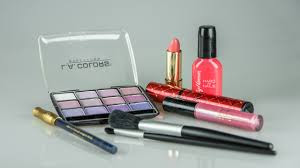Home Remedies for hyperpigmentation
People with skin tones ranging from extremely light to extremely dark are visible all over the world. A number of disorders are associated with skin pigmentation over this range of skin tones, leading to issues such as hypopigmentation (areas of skin that are paler than your true skin tone) and hyperpigmentation (areas of skin that are darker than the surrounding skin).
Skin hyperpigmentation is the result of excess melanin production in specific skin regions. The substance called melanin is what gives skin the color it has. It is critical to fully comprehend both the management techniques and the underlying causes of this illness.
Why Does Hyperpigmentation Occur?
There are various reasons that might lead to hyperpigmentation, such as:
1. External Elements
These include the following and have an outside source:
Sun damage (solar lentigines are another name for these spots)
Post-inflammatory hyperpigmentation resulting from skin injuries such as burns, cuts, or acne
2. Innate Elements
These originate or have an internal source. These may be brought on by hormonal changes during pregnancy or puberty, genetics (such as freckles), thyroid disorders, oral contraceptives (birth control pills), medications that cause light sensitivity, or adrenal disorders like Addison's disease, a condition in which the body doesn't produce enough hormone called cortisone.
Other endogenous components include:
Diabetes Acanthosis nigricans: A skin ailment that causes the body to become darkly pigmented.
Signs of excessive pigmentation:
Symptoms of various forms of hyperpigmentation include:
Sun damage-related hyperpigmentation: These are little, darker spots that are frequently seen on the hands, face, and other places that are exposed to the sun.
Melasmas: Large patches of darker skin brought on by hormonal fluctuations, they resemble age spots in appearance.
Brown, tiny dots known as freckles can appear anywhere on the body. Nonetheless, the face and arms frequently have these lesions. When freckles, age spots, and other dark skin patches are exposed to sunlight, they may become darker.
There are various reasons that might lead to hyperpigmentation, such as:
1. External Elements
These include the following and have an outside source:
Sun damage (solar lentigines are another name for these spots)
Post-inflammatory hyperpigmentation resulting from skin injuries such as burns, cuts, or acne
2. Innate Elements
These originate or have an internal source. These may be brought on by hormonal changes during pregnancy or puberty, genetics (such as freckles), thyroid disorders, oral contraceptives (birth control pills), medications that cause light sensitivity, or adrenal disorders like Addison's disease, a condition in which the body doesn't produce enough hormone called cortisone.
Other endogenous components include:
Diabetes Acanthosis nigricans: A skin ailment that causes the body to become darkly pigmented.
Signs of excessive pigmentation:
Symptoms of various forms of hyperpigmentation include:Sun damage-related hyperpigmentation: These are little, darker spots that are frequently seen on the hands, face, and other places that are exposed to the sun.
Melasmas: Large patches of darker skin brought on by hormonal fluctuations, they resemble age spots in appearance.
Brown, tiny dots known as freckles can appear anywhere on the body. Nonetheless, the face and arms frequently have these lesions. When freckles, age spots, and other dark skin patches are exposed to sunlight, they may become darker.
Recommended Natural Treatments for Hyperpigmentation:
1. Aloe Vera Gel: This plant's gel is used to treat a variety of skin ailments. It is applied to lessen skin hyperpigmentation. Aloe vera's active constituent, aloe sin, may be able to stop skin hyperpigmentation and excessive melanin synthesis. Six Aloe vera gel can be applied directly to the affected area to provide positive benefits. Aloe vera gel is another ingredient you can use to your DIY face masks.
3. Soy: This skincare regimen works well to brighten skin. For acne-related post-inflammatory hyper-pigmentation, soybean oil is beneficial. It also works well for melasma, facial hypermelanosis (changes in the pigmentation of the skin of the face caused by UV radiation), and photodamage. Six You can obtain the much-needed benefits by include soy in your diet.
Your skin can be massaged with rice water and then washed with water.
Another method for creating a face mask is to use a large piece of tissue paper that has been soaked in rice water. As a toner, you can lightly apply a little amount of rice water on a cotton pad to your face and neck.
6. Pomegranate: This fruit can help with hyperpigmentation. Pomegranate seeds can be crushed and used as an exfoliating mask. Use caution when massaging as it may cause skin irritation. Pomegranate skin oil is an additional option. Only after cleansing and toning, but before moisturizing, should you apply the oil.
Before retiring to bed, use a serum made entirely of grape seed oil on your face. Add a few drops of seed oil to your moisturizer or cream to experience the benefits.
Combine lavender or another essential oil with grape seed oil. When using grape seed oil, you should use no more than a few drops of essential oil.






.jpeg)
.jpeg)
.jpeg)

.jpg)




.jpg)


.jpeg)
.jpeg)
.jpeg)
























